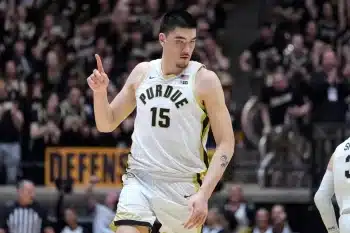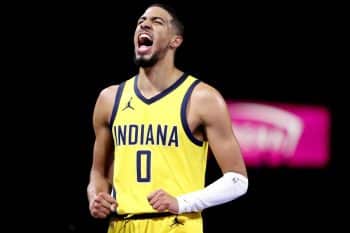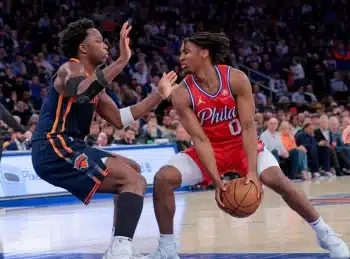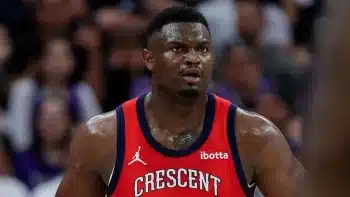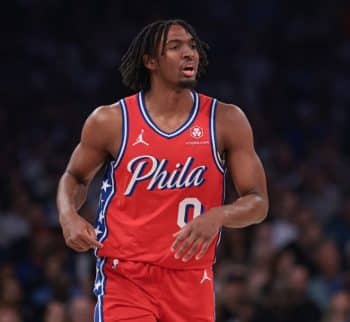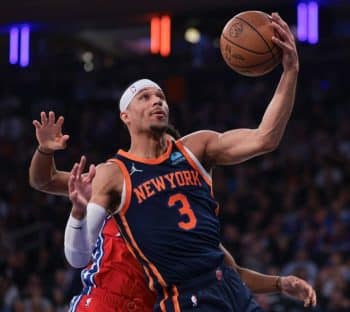NBA
Six Things to Know: NBA Pacific Division
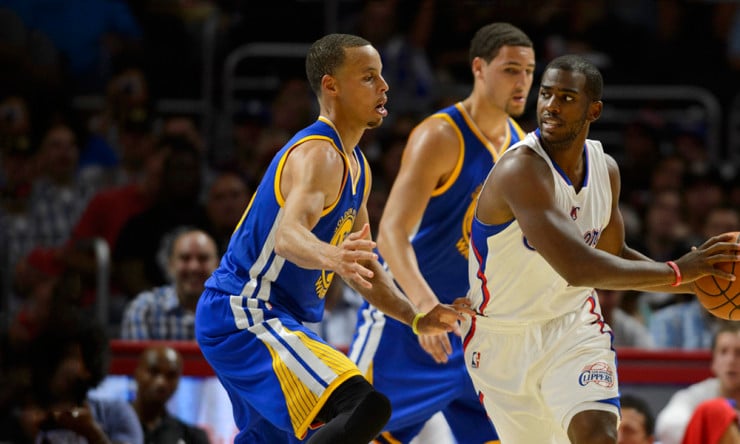
This week, Basketball Insiders takes a look at six things to keep an eye on in each division. We kicked our series off with the Southeast Division, followed by the Central Division. Now, we take a look at the Pacific Division.
The Pacific Division again features two contenders in the Los Angeles Clippers and Golden State Warriors. The Warriors hired Steve Kerr to take over as head coach, while the Clippers got a new owner in Steve Ballmer as well as a few new role players. Meanwhile, the Phoenix Suns are looking to build off of last season’s surprising success after signing point guard Isaiah Thomas and re-signing Eric Bledsoe to a five-year contract. The Sacramento Kings enter this season led by DeMarcus Cousins and Rudy Gay, both of whom won gold medals this summer with Team USA in the FIBA World Cup. Also, the Los Angeles Lakers are coming off of one of their worst seasons in franchise history, but bring back a healthy Kobe Bryant and Steve Nash, along with some other key additions and a new head coach in Byron Scott.
These are some of the major events that took place in the Pacific Division this offseason. Here we take a look at six things you should know about the Pacific Division entering the 2014-15 NBA season.
1. The Golden State Warriors will be a better offensive team under first year head coach Steve Kerr.
Despite all of their offensive weapons, the Golden State Warriors were not an elite offensive team last season. Former head coach Mark Jackson had a preference for utilizing players in iso-situations, which stagnated what should have been a high-octane offense. Ultimately the Warriors finished last season with the NBA’s 12th-best offense (105.3 points per 100 possessions), which is a surprisingly low ranking for a team with arguably the best shooting backcourt in NBA history.
Jackson was fired this offseason and rookie head coach Steve Kerr was hired to replace him. To help run Golden State’s offense, Kerr hired Alvin Gentry away from the Clippers. Gentry was credited with running the Clippers’ offense last season, which ranked first overall in the NBA.
Kerr has said that he wants to push the pace in transition, but there is more to the new Warriors offense than just running-and-gunning. Kerr is looking to implement principles from the Chicago Bulls and San Antonio Spurs teams he played for, which means the Warriors will run an offense that utilizes both the triangle offense and the Spurs’ effective motion weak set. Utilizing these offensive principles should improve the Warriors’ ball movement and create easier scoring opportunities for both the Warriors guards and big men.
The Warriors played extremely hard for Mark Jackson last season, and thrived as a defense under him. If the Warriors maintain that commitment to defense and successfully implement Kerr’s new offense, Golden State will be one of the best two-way teams in the league this upcoming season.
2. Spencer Hawes and Jordan Farmar are big additions to the Los Angeles Clippers.
It may seem obvious that adding a seven-foot center who can stretch the floor would be a significant addition for a team, but adding Spencer Hawes is particularly important for the Los Angeles Clippers.
This time last year, the Clippers were entering the 2013-14 NBA season with a front court depth chart that featured Blake Griffin, DeAndre Jordan, Antawn Jamison, Byron Mullens and Ryan Hollins. When Griffin and Jordan came out of the game, the frontcourt struggled to say the least. Recognizing this weakness, team president and head coach Doc Rivers traded away Jamison and Mullens, and acquired free agents Hedo Turkoglu, Glen Davis and Danny Granger midseason. Rivers tried all season to find an effective frontcourt rotation, but never found a sustainable combination.
With Hawes on the team, Rivers can now run a variety of frontcourt combinations. Hawes’ ability to stretch the floor makes it possible for him to play power forward next to Jordan (though that combo could struggle defensively). Alternatively, Hawes can stretch the floor from the center position, providing Griffin with more space to operate near and around the basket. And beyond this three-man rotation, Davis, Turkoglu and offseason-addition Ekpe Udoh provide solid depth in the frontcourt, which the team did not have entering last season.
Also, not re-signing backup point guard Darren Collison was a significant loss for the Clippers this offseason. But the Clippers filled Collison’s void nicely by signing Jordan Farmar. Farmar struggled with injuries last season, but in 41 games played he shot a blistering 43.8 percent from three-point range. Though Collison was effective doing a little bit of everything, Farmar may be the better overall fit with his ability to stretch the floor, which is crucial in Rivers’ offense.
Both signings somewhat flew under the radar this offseason, but both are significant for the Clippers as they try to get over the hump this season and win a championship.
3. The Sacramento Kings have position battles for three starting positions.
Some teams trot out the same starting lineup every night. That likely won’t be the case this season for the Sacramento Kings, whose only two locks to start are Rudy Gay and DeMarcus Cousins.
The Kings let Isaiah Thomas sign with the Phoenix Suns this offseason, and replaced him with Darren Collison. The Kings signed Collison to a three-year, $15.04 million deal after he had a solid season with the Clippers backing up Chris Paul. The immediate assumption was that the Kings believed in Collison enough that he would be the unquestioned starter moving forward. However, late in the offseason, the Kings signed Ramon Sessions to a two-year, $4.25 million deal.
Don’t let the size of each player’s contract fool you. Sessions is an underrated point guard that can challenge Collison for the starting point guard position. Last season, Sessions averaged 12.3 points, 2.4 rebounds and 4.1 assists in 26.7 minutes per game. In comparison, Collison averaged 11.4 points, 2.4 rebounds and 3.7 assists in 25.9 minutes per game. In addition, Sessions is only one year older than Collison, is bigger and is the better passer. So while it seemed like Collison was the obvious answer for the Kings, it turns out that Sessions may end up being the starter at some point this season.
At shooting guard, Ben McLemore returns for his second season as the presumed starter. However, McLemore was very inconsistent last year and will need to show improvements in his game to solidify his position. Competing with McLemore is rookie Nik Stauskas, who has so far shown a nice blend of shooting, playmaking and athleticism at the NBA level. McLemore has the inside track on the starting job, but Stauskas may supplant him if McLemore shows the same inconsistencies from last season.
At power forward, Carl Landry, Derrick Williams, Jason Thompson and Reggie Evans are all competing with one another. Each player brings different skills and style to the power forward position, but no one really stands out. Williams has the most potential, but has never lived up to expectations after being drafted second overall in the 2011 NBA Draft. It seems that head coach Mike Malone prefers to bring Landry off the bench, and Evans is more of a rebounding specialist than full-time starter. This competition may end up coming down to Williams and Thompson, but could change multiple times throughout the season.
4. The Los Angeles Lakers will again struggle defensively.
The Los Angeles Lakers are looking to have a bounce-back season after going 27-55 last year. Kobe Bryant is healthy and looking spry, while Steve Nash is now healthier than he was seemingly all of last season. In addition, the Lakers have added notable players like Jeremy Lin, Carlos Boozer, Ed Davis and highly touted rookie Julius Randle.
The Lakers are primed to have a much better season than last, but like last year, the defense is going to be a major issue. Last year, former Lakers head coach Mike D’Antoni took a lot of criticism for his seeming lack of interest in defense. Now, Byron Scott takes over for D’Antoni and brings with him an added emphasis to defense.
But adding Scott won’t fix the Lakers’ major defensive issues. According to ESPN’s Real Plus-Minus rating (which is an estimate of a player’s impact to his team’s defense per 100 possessions), the Lakers only had four positive impact defensive players last season. Those four players were Chris Kaman, Pau Gasol, Robert Sacre and Xavier Henry. Kaman and Gasol are gone, and Sacre and Henry figure to play backup minutes at most.
Unfortunately, adding Bryant, Nash, Lin and Boozer does little to help in this area as they are not really impact defensive players. Ed Davis, Wesley Johnson and Jordan Hill are capable defenders, but it’s unlikely that they can turn the Lakers into a competitive defensive unit. Coach Scott will have to figure out how to make up for his lack of defenders, otherwise he will have to try and outgun opponents every night while surrendering a huge amount of points.
5. The Phoenix Suns have one of the most explosive backcourts in the league.
This offseason, the Phoenix Suns surprised many when they signed point guard Isaiah Thomas. Thomas quietly had an impressive season with Sacramento last year, averaging 20.3 points, 6.3 assists, 2.9 rebounds and 1.3 steals per game, but he hardly filled a need as Phoenix already had two quality point guards.
Nevertheless, Thomas now joins Goran Dragic and Eric Bledsoe in Phoenix to create one of the most unique backcourts in the NBA. Suns head coach Jeff Hornacek found success playing Dragic and Bledsoe together last season, until Bledsoe suffered a knee injury that sidelined him for roughly half of the season. Dragic did everything he could to make up for the loss of Bledsoe, putting together a career-year and almost leading the Suns to the playoffs. In addition to Thomas, Dragic and Bledsoe, journeyman shooting guard Gerald Green had an impressive 2013-14 NBA season, hitting the fourth-most three pointers in the league (204) on 40 percent shooting. Also, Phoenix used the 18th overall pick in the 2014 NBA Draft on point guard Tyler Ennis, who has a lot of potential at 20 years old.
It will be interesting to see how Hornacek balances his point guards. If he can successfully play all three veterans heavy minutes without giving up too much defensively, the Suns could tout the most dynamic backcourt in the NBA this upcoming season, as surprising as that may be.
6. The Warriors may end the Clippers’ two-year reign atop the Pacific Division.
In a seismic shift from years past, the Los Angeles Clippers and Golden State Warriors stand atop the Pacific Division. The Clippers have won the Pacific Division two years in a row now, but the Warriors stand in their way again this season. Over the last few seasons, the Clippers and Warriors have become one of the NBA’s best rivalries. The two teams met last season in the first round of the playoffs, where the Clippers barely managed to out-duel the Warriors in seven games and advance to the second round.
Heading into this season, there are reasons to believe both teams will be even better. The Clippers are bringing back their core players from last season, and have another year of experience under Doc Rivers. In addition, the Donald Sterling scandal is over and the team now has an enthusiastic and supportive owner in Steve Ballmer. Also, the Clippers have added impact players as mentioned above, as well as Chris Douglas-Roberts. The improvement that Blake Griffin has shown in his jump shot during the preseason is another significant development that could make Griffin and the Clippers even more dangerous. Lastly, and perhaps most importantly, the team is now healthy after suffering significant injuries last season.
For the Warriors, they added a versatile guard in Shaun Livingston, who solidifies the Golden State backcourt by adding both defense and playmaking. Also, as mentioned above, the Warriors’ offense should drastically improve from last season now that Kerr is on the sidelines. In addition, Stephen Curry continues to develop into one of the top all-around players in the league, and both he and Klay Thompson are coming off of a successful summer with Team USA. The Warriors’ roster is getting older (like the Clippers), but still has the potential to be a top offensive and defensive team, but that largely depends on how quickly Kerr can get the team accustomed to his offensive and defensive systems.
The Suns have the potential to surprise everyone and be in the mix with the Clippers and Warriors this upcoming season. However, the more likely scenario is that the Clippers and Warriors will be in a tight race all season as both teams fight for a championship. Though it’s not that important in the grand scheme of things, it’s possible, if not likely, that the Warriors will bring an end to the Clippers’ two year run atop the Pacific Division.
Make sure to follow our Six Things to Know series throughout the week to stay updated on what’s happening in each division.
